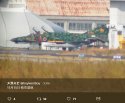A lack of Australian confidence in Japan’s defense industry sank an offer from Tokyo in the AUD$50 billion (U.S. $38 billion) tender for attack submarines, while greater stealth and advanced propulsion technology buoyed a rival French bid, said Sam Bateman, a research fellow at the Australian National Centre for Ocean Resources and Security.
Australia’s selection was based on a “commercial and strategic decision,” Bateman told the annual seminar of the Observatory for Southeast Asia on Nov. 17.
The seminar, held at the French War College, was organized by Asia Centre, a think tank of Inalco, a French foreign language institute, and was backed by the Institute for Strategic Research and General Directorate for International Relations and Strategy. The latter two are part of the French Armed Forces Ministry.
Japan enjoyed a strategic advantage, as there was “some U.S. pressure” on Australia to pick a Japanese submarine, Bateman said. But after an exhaustive study, there was “some uncertainty about Japanese ability to deliver,” he added. The lack of confidence stemmed from Japan’s little experience in defense sales in the wake of Australia’s multibillion dollar program.
“France is greatly involved in military sales,” Bateman said, adding that there was an offer for a better submarine in terms of stealth and a forced jet propulsion rather than a conventional propeller.
Bateman is a former Australian Navy senior officer and held senior posts in strategic policy and force development in the Australian Department of Defence.
Tokyo’s failure to win the Australian tender showed “Japan is … the new kid on the block when it comes to international arms sales,” said John Nilsson-Wright, senior lecturer at Cambridge University and senior research fellow at Chatham House.
That lack of experience reflected Japanese restrictions on arms exports after World War II, but now there are “many reflections of the great appetite on the part of defense industry in Japan,” he said. The defense industry is small in the Japanese national economy, “but the appetite is there,” he added.
A more active Japanese military role can be seen in the 2+2 meeting and in discussions between the U.K. and Japan, with defense technology part of those talks, Nilsson-Wright said.
U.S. Secretary of State Rex Tillerson and U.S. Defense Secretary Jim Mattis met Japanese counterparts Taro Kono and Itsunori Onodera at a meeting of the bilateral Security Consultative Committee, or 2+2, in August.
France and Japan have also forged stronger defense technology links in recent years.
Japan displayed its
at the
, which closed Nov. 16, while the
went on exhibition for the first time at the Paris Air Show in June.
Australia picked Naval Group in 2016 over the Japanese offer from Mitsubishi Heavy Industries and Kawasaki Shipbuilding, and a German bid from ThyssenKrupp Marine Systems. The Australian Future Submarine Program seeks to build 12 ocean-going, diesel-electric submarines in Australia. Lockheed Martin will supply the combat management system.
Japan reversed in 2014 an arms export ban and embarked on a cautious sales drive, observing United Nations arms embargoes and avoiding offers to states mired in conflicts.








